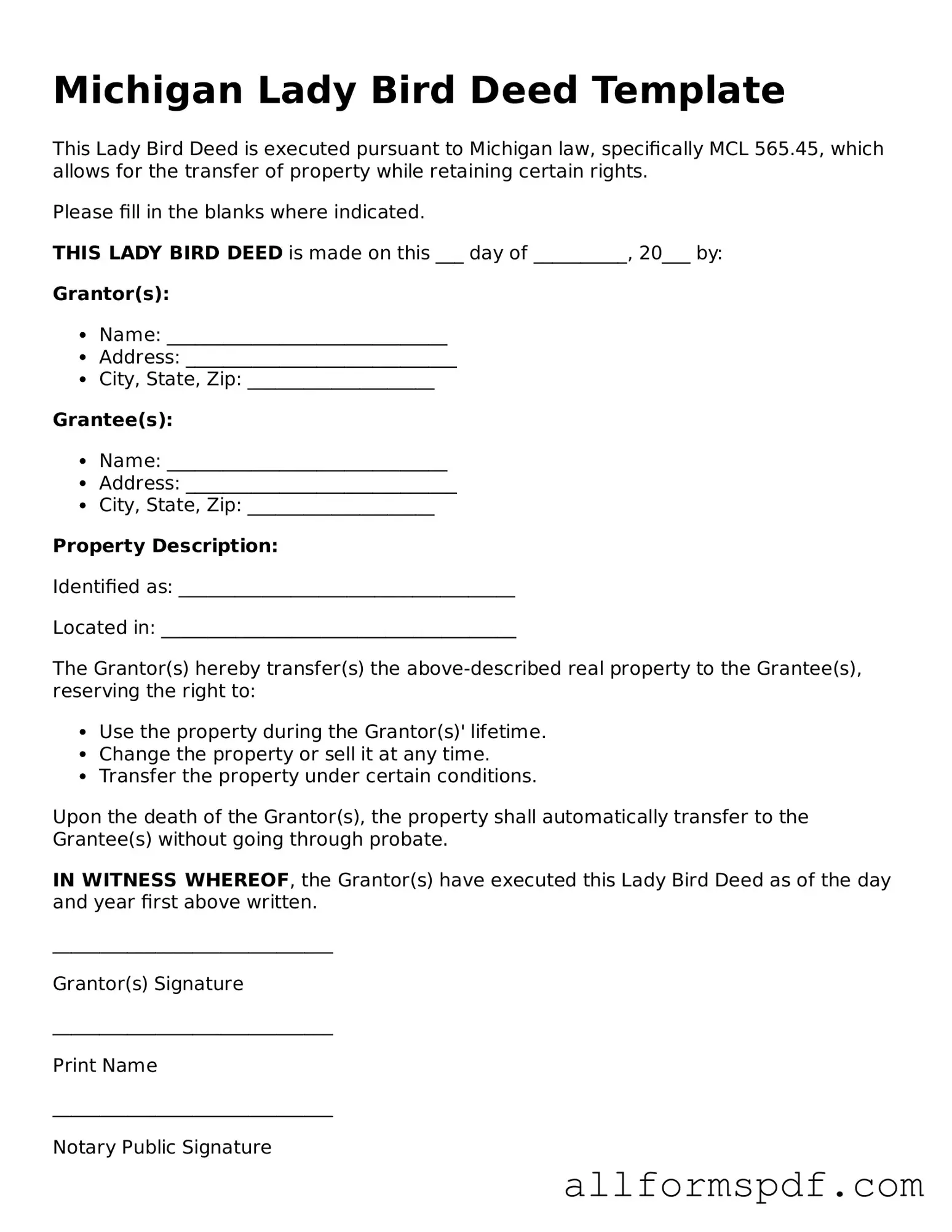Michigan Lady Bird Deed - Usage Guidelines
Filling out the Michigan Lady Bird Deed form is an important step in ensuring that your property is transferred according to your wishes. Once you complete the form, it will need to be signed and notarized before being filed with the appropriate county register of deeds. Here’s how to fill out the form step by step.
- Obtain the Form: Start by downloading the Michigan Lady Bird Deed form from a reliable source or obtain a hard copy from your local legal office.
- Property Description: Fill in the legal description of the property you are transferring. This can typically be found on your property deed or tax documents.
- Grantor Information: Enter your name as the current owner (the grantor). Include your address and any other required identifying information.
- Grantee Information: Next, provide the name and address of the person or persons who will receive the property (the grantee). Make sure to include all necessary details.
- Transfer Details: Specify the terms of the transfer. Indicate that the property will be transferred upon your death, retaining your rights during your lifetime.
- Sign the Form: Once all information is filled out, sign the form in the designated area. Your signature must be witnessed or notarized.
- Notarization: Have the form notarized by a licensed notary public. This adds a layer of authenticity to your document.
- File the Document: Finally, take the completed and notarized form to your county register of deeds office for filing. There may be a small fee associated with this process.
After filing, it’s wise to keep a copy of the deed for your records. This ensures you have documentation of the transfer and can reference it in the future if needed.
